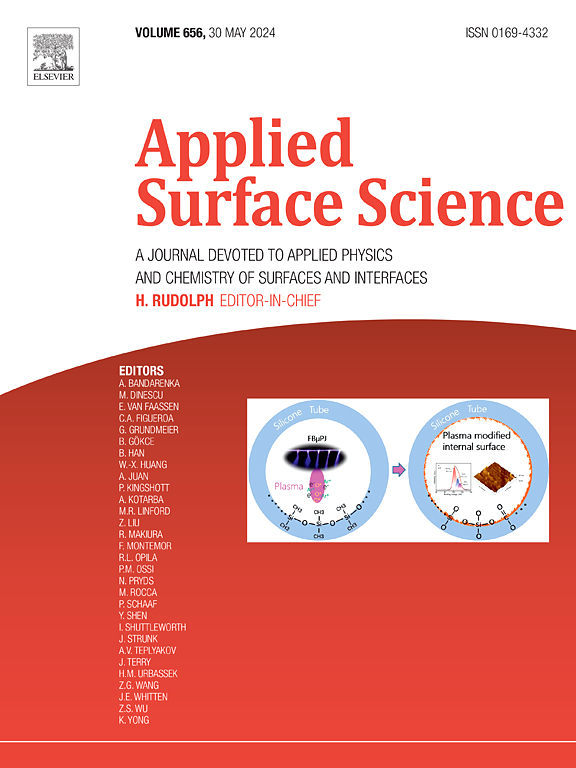zif衍生PtCu/N-DC十二面体:低铂负载下甲醇氧化活性和抗中毒能力的协同增强机制
IF 6.3
2区 材料科学
Q2 CHEMISTRY, PHYSICAL
引用次数: 0
摘要
制备低成本、高活性的甲醇氧化反应(MOR)电催化剂是实现可再生能源技术的重要途径。然而,由于铂基催化剂的高价格和不稳定性,在铂基合金催化剂的基础上添加过渡金属是提高催化活性和稳定性的普遍策略。本文采用简单热解方法制备了一种高度分散在n掺杂碳十二面体(PtCu/N-DC)上的PtCu合金催化剂。实验表明,氮掺杂多孔碳载体与PtCu合金之间的相互作用使催化剂具有较强的稳定性。同时,Cu原子与Pt原子之间存在较强的相互作用,掺杂Cu可以调整其Pt的表面电子构型,从而提高催化剂的MOR性能。与商用Pt/C的20 %相比,PtCu/N-DC的铂负载仅为10 %,其质量活性和比活性分别高出4.1倍和5.8倍,具有显著的催化活性和高水平的抗一氧化碳中毒能力。理论分析表明,PtCu/N-DC催化剂在关键步骤中表现出较低的能垒,这与实验结果证明的电催化活性增强相一致。本文章由计算机程序翻译,如有差异,请以英文原文为准。

Zif-derived PtCu/N-DC dodecahedrons: Synergistic enhancement mechanism of methanol oxidation activity and poisoning resistance under low platinum loading
Preparing low-cost and high-activity methanol oxidation reaction (MOR) electrocatalysts is a key approach for renewable energy technologies. However, due to the high price and instability of platinum-based catalysts, the addition of transition metals to alloy catalysts on the basis of platinum is a prevalent strategy to improve catalytic activity and stability. Herein, we prepared a PtCu alloy catalyst that is highly dispersed on an N-doped carbon dodecahedron (PtCu/N-DC) by a simple pyrolysis method. The experiments demonstrate that the robust interaction between N-doped porous carbon support and PtCu alloy imparts strong stability to the catalyst. At the same time, there is a strong interaction between Cu atom and Pt atom, doping with Cu can adjust its surface electronic configuration of Pt, thereby improving the MOR performance of the catalyst. With a platinum loading of just 10 % compared to the 20 % in commercial Pt/C, PtCu/N-DC exhibits mass activity and specific activity that are 4.1 times and 5.8 times higher, with significant catalytic activity and a high level of resistance to carbon monoxide poisoning. Theoretical analysis indicates that the PtCu/N-DC catalyst exhibits a low energy barrier during the critical steps, which aligns with the enhanced electrocatalytic activity demonstrated in the experimental findings.
求助全文
通过发布文献求助,成功后即可免费获取论文全文。
去求助
来源期刊

Applied Surface Science
工程技术-材料科学:膜
CiteScore
12.50
自引率
7.50%
发文量
3393
审稿时长
67 days
期刊介绍:
Applied Surface Science covers topics contributing to a better understanding of surfaces, interfaces, nanostructures and their applications. The journal is concerned with scientific research on the atomic and molecular level of material properties determined with specific surface analytical techniques and/or computational methods, as well as the processing of such structures.
 求助内容:
求助内容: 应助结果提醒方式:
应助结果提醒方式:


